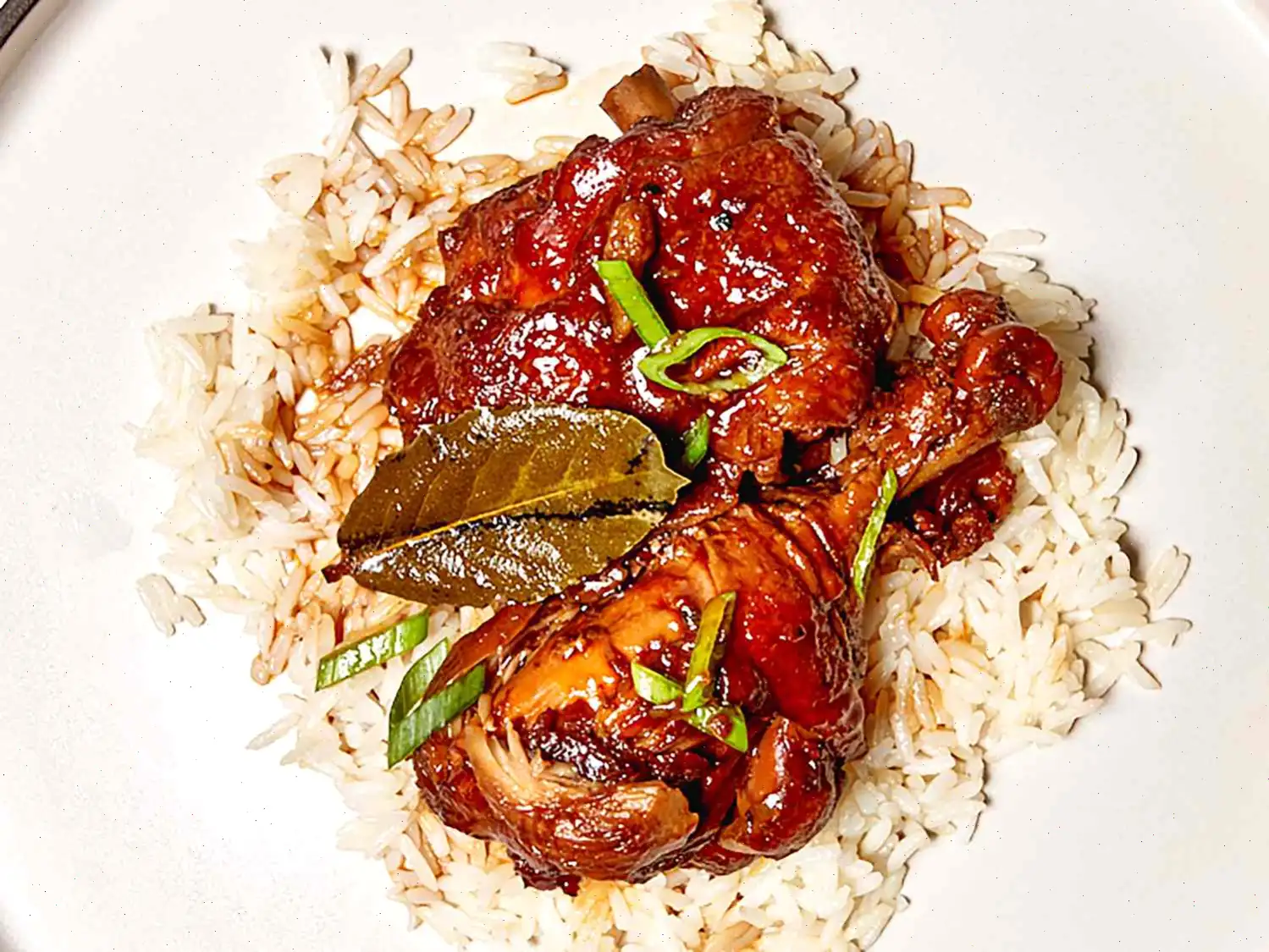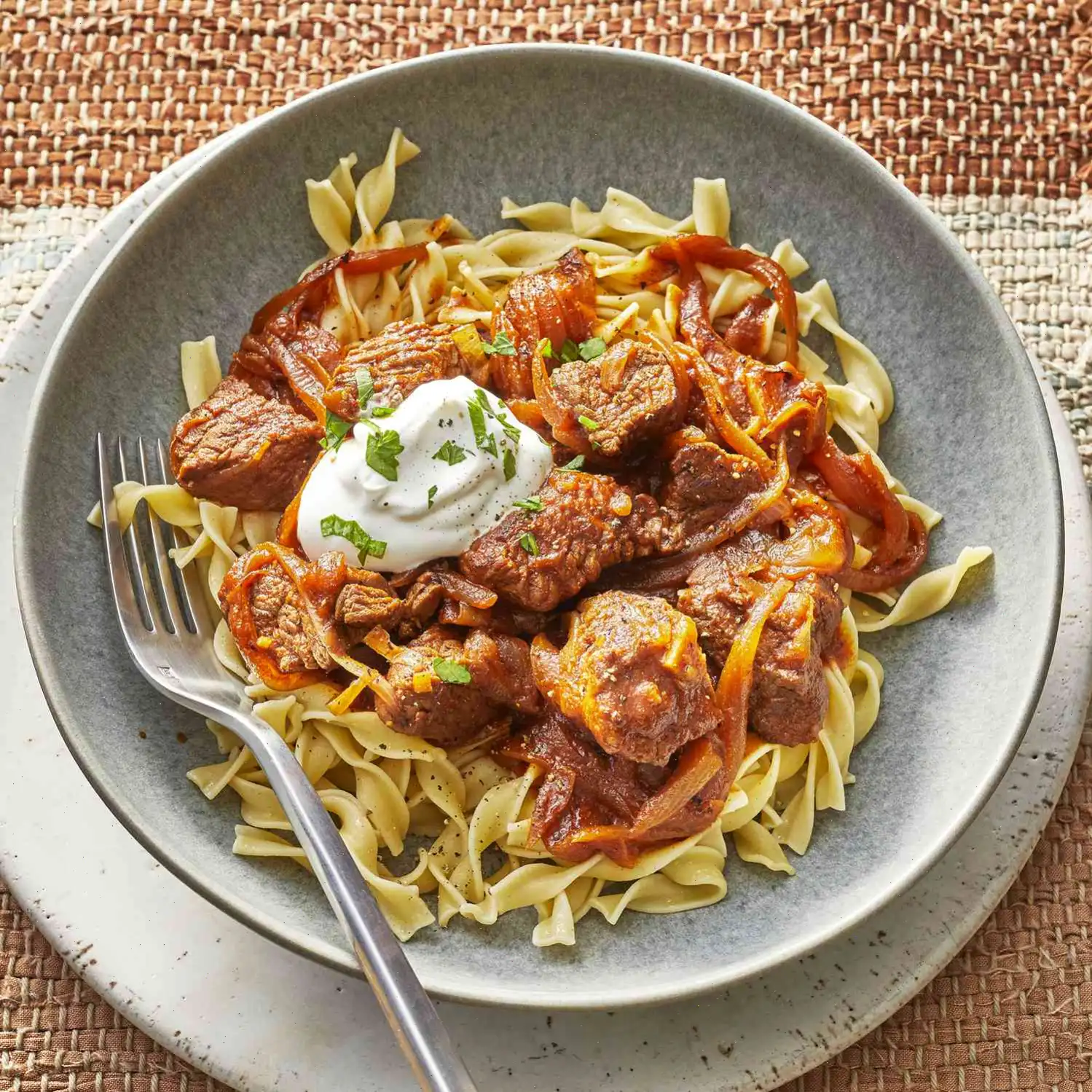
Roscoe's Chicken Adobo Recipe
This flavorful and aromatic Chicken Adobo is a popular Filipino dish, known for its balance of savory, sweet, and tangy flavors. The recipe yields 6 servings and is perfect for a family dinner or meal prep for the week.
Ingredients
- 2 tablespoons vegetable oil
- 1 whole chicken, cut into parts
- 4 cloves garlic, minced
- 1 onion, cut into chunks
- 5 bay leaves
- 1/2 cup light brown sugar
- 1 cup low-sodium soy sauce
- 1 cup white vinegar
- 2 cups water
- 8 black peppercorns
- Steamed rice for serving
Directions
- Heat vegetable oil in a large pot over medium-high heat. Add the chicken pieces and cook until they turn golden brown, about 2 to 3 minutes per side.
- Once the chicken is browned, add the garlic, onion, bay leaves, brown sugar, soy sauce, vinegar, water, and peppercorns to the pot. Stir the ingredients together until well combined.
- Bring the mixture to a simmer. Once it starts simmering, reduce the heat to medium and cover the pot with a lid. Let it simmer for 15 minutes, allowing the flavors to meld together.
- After 15 minutes, remove the lid and continue simmering for another 15 minutes, allowing the sauce to reduce and thicken slightly.
- Once done, remove from heat. Serve the Chicken Adobo hot with steamed rice to soak up the delicious sauce.
Nutrition Facts (Per Serving)
| Nutrition Component | Amount | % Daily Value |
|---|---|---|
| Calories | 387 | |
| Total Fat | 20g | 26% |
| Saturated Fat | 5g | 23% |
| Cholesterol | 101mg | 34% |
| Sodium | 184mg | 8% |
| Total Carbohydrate | 18g | 6% |
| Dietary Fiber | 0g | 1% |
| Total Sugars | 16g | |
| Protein | 31g | 62% |
| Vitamin C | 2mg | 2% |
| Calcium | 44mg | 3% |
| Iron | 2mg | 10% |
| Potassium | 320mg | 7% |
* Percent Daily Values are based on a 2,000 calorie diet. Your daily values may be higher or lower depending on your calorie needs.
** Nutrient information is not available for all ingredients. Amount is based on available nutrient data.
(-) Information is not currently available for this nutrient. If you are following a medically restrictive diet, please consult your doctor or registered dietitian before preparing this recipe for personal consumption.
The Story Behind Roscoe's Chicken Adobo
Chicken Adobo is one of the most iconic dishes in Filipino cuisine, and its roots stretch back centuries. Originally, adobo was a method of preserving meat before refrigeration, using vinegar, salt, and garlic to prevent spoilage. Spanish colonizers in the Philippines encountered this cooking technique and named it adobo, borrowing from the Spanish word for marinade or sauce. Roscoe's Chicken Adobo brings this traditional dish to an American audience, adapting the flavors slightly while maintaining the essential balance of savory, tangy, and aromatic notes that define authentic adobo.
Regional Variations and Features
Adobo varies widely across the Philippines, with each region adding its unique touch. In the northern Luzon regions, it tends to be richer with soy sauce and often includes potatoes or coconut milk, while southern Visayan adobo emphasizes a more vinegar-forward taste, sometimes incorporating turmeric or chili. Roscoes version leans toward the sweeter, milder American palate with light brown sugar, while still honoring the tangy vinegar base and the classic combination of garlic, bay leaves, and peppercorns. These regional nuances make each version distinct and allow home cooks to experiment according to taste.
What Sets It Apart from Similar Dishes
While there are many stewed chicken recipes worldwide, what differentiates chicken adobo is its simplicity and its balance of acidic, salty, and slightly sweet flavors. Unlike Western braises or coq au vin, adobo does not rely on wine or heavy sauces; vinegar plays a central role, which gives the meat a tender texture and a sharp, distinctive flavor. Compared to other Filipino dishes like kare-kare or sinigang, adobo is uniquely preserved by vinegar and garlic, creating a flavor profile that is immediately recognizable and deeply comforting.
Typical Places to Enjoy Chicken Adobo
Chicken Adobo is ubiquitous in the Philippines, appearing in both everyday home meals and restaurant menus. It is commonly served with steamed white rice and sometimes accompanied by pickled vegetables. In the U.S., Roscoe's Chicken Adobo is often enjoyed in Filipino-American restaurants, casual family dinners, and gatherings where comfort food is celebrated. Its easy preparation and versatile flavor make it a popular choice for both weekday dinners and special occasions.
Interesting Facts
- Adobo was considered a practical method for preserving meat long before refrigeration became common.
- The number of garlic cloves, type of vinegar, and amount of soy sauce used can vary greatly from family to family, making each recipe personal.
- Some variations of adobo incorporate coconut milk, pineapple, or even potatoes, demonstrating its adaptability to local ingredients.
- The dish is so beloved that there is a National Adobo Day celebrated in the Philippines on November 6th.
- Despite its simple ingredients, adobos flavor is layered and complex, making it one of the few dishes where minimal seasoning produces extraordinary depth.
You can listen to this recipe in AI audio format. Simply click the play button below to listen to the content in a format that suits you best. It’s a great way to absorb information on the go!
FAQ about Roscoe's Chicken Adobo Recipe
Comments
Maria Ramirez
11/08/2023 10:37:06 PM
This dish is bursting with delicious flavors and I will surely be making it again. I accidentally used regular soy sauce instead of low sodium, which made mine a bit salty, but I believe with the right sauce, it would be perfectly balanced.
Brian Hall
06/20/2023 09:47:19 PM
Half a cup of brown sugar? Not in our Filipino household. Four cloves of garlic? Absolutely not! We use even more!
Victoria Nelson
01/14/2024 01:39:44 AM
I have cooked chicken adobo numerous times using the recipe shared by my Filipino friend, and I have always skipped using brown sugar. I prefer the tangy flavor with just soy sauce and vinegar, along with plenty of garlic.
Brian Hill
04/01/2025 12:18:04 PM
This dish was the most delicious thing I've ever tasted! I felt like I was transported to heaven with each bite.







